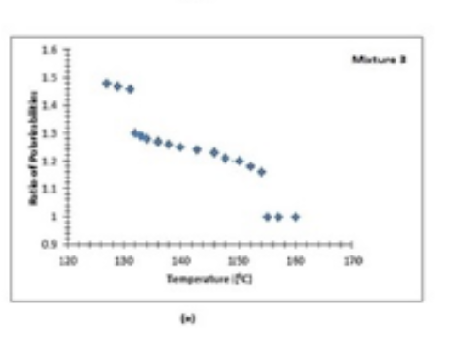


Indian Journal of Science and Technology
DOI: 10.17485/IJST/v15i31.1084
Year: 2022, Volume: 15, Issue: 31, Pages: 1541-1547
Original Article
Syed Salman Ahmad Warsi1*, Rajiv Manohar2
1Department of Physics, Integral University, Lucknow, U.P, 226026, India
2Liquid Crystal Research Lab, Physics Department, University of Lucknow, U. P, 226007, India
*Corresponding Author
Email: [email protected]
Received Date:20 May 2022, Accepted Date:03 July 2022, Published Date:16 August 2022
Objectives: To study the behavior of the molecular polarizabilities (ae, ao) and order parameter (S) in various phases of Cholesteryl Propionate, Cholesteryl Benzoate and their homogeneous mixtures of weight fractions 0.25, 0.50 and 0.75. Methods: The measurement of extraordinary refractive index (ne) and ordinary refractive index (no) was carried out with the help of Abbe’s refractometer and modified wedge method, in the temperature range of 850C– 1800C. The anisotropic internal field model is used to calculate the internal field factor (a) and order parameter (S). Findings: The decrease in the ratio of the principal polarizabilities (ao =a e)with increase in temperature has been observed. At the transition points of solid to cholesteric (S-Ch transition) and cholesteric to isotropic (Ch-I transition), the decrease in the ratio of principal polarizabilities is much sharper for both Cholesteryl Benzoate and Cholesteryl Propionate and also for their mixtures. The value of the order parameter (S) remains constant in solid phase and sharp decrease occurs in its values for pure samples as well as their mixtures, when materials go from solid to cholesteric phase (S-Ch transition). After the S-Ch transition, the order parameter (S) goes on decreasing with further increase in temperature until the cholesteric to isotropic transition (Ch-I transition) occurs. Novelty: Some researchers have calculated the principal polarizabilities and order parameter of optically positive nematic liquid crystals and aligned cholesteric liquid crystals by using isotropic internal field model such as Vuk’s approach. This itself raises the question of how can an anisotropic environment give rise to isotropic field. The present study is based on the anisotropic field model suggested by Maier and Saupe in which the internal field acting on a molecule is considered to be anisotropic. This approach used to calculate principal polarizabilities and order parameter is more realistic and gives more accurate results.
Keywords: Cholesteric; Isotropic; Birefringence; Polarizability; Order Parameter; Anisotropic Internal Field Factor
© 2022 Warsi & Manohar. This is an open-access article distributed under the terms of the Creative Commons Attribution License, which permits unrestricted use, distribution, and reproduction in any medium, provided the original author and source are credited.
Published By Indian Society for Education and Environment (iSee)
Subscribe now for latest articles and news.